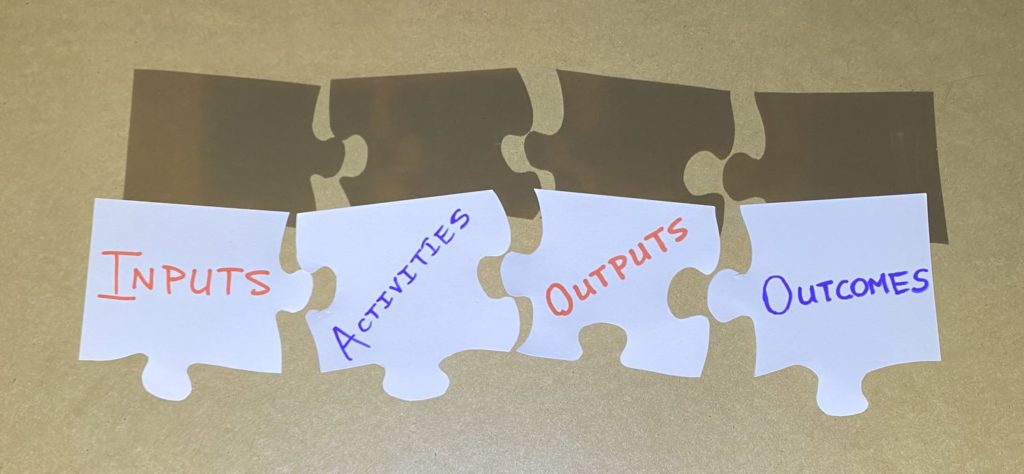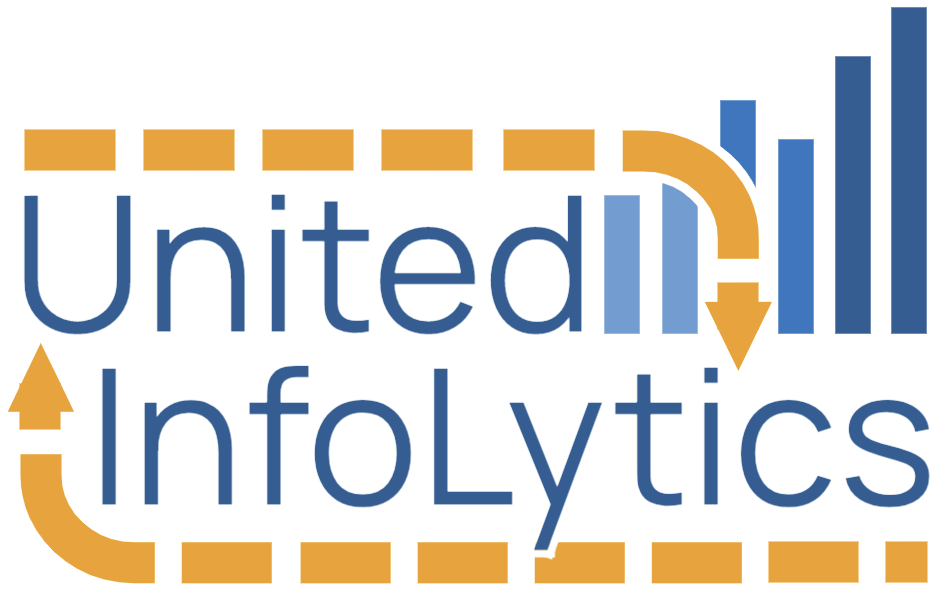
Many nonprofits don’t create a logic model until writing a specific grant proposal requires them to do so, and they start researching logic models while facing a submission deadline related to securing new or additional funding. This is definitely a good reason to start learning about logic models, but logic models are so powerful and helpful to aligning and explaining a nonprofit’s work that most nonprofits should start making their first logic model before they even apply for nonprofit status. It’s also a great idea for most nonprofits to be updating their logic model as often as their strategy or activities change because it’s better to have one ready to go when it’s time to apply for funding rather than updating it when facing a deadline.
What is a logic model?
A logic model is an aligned plan for impact. In short, it’s what you need to do your work, the work you do, and the meaningful differences that this work should hopefully lead to for society and the people you impact. Typically the logic model is organized horizontally with terminology similar to this:
| Inputs | Activities | Outputs | Outcomes |
|---|---|---|---|
| The resources you need to do the work: typically money, volunteers, employees, etc. | The work itself: What do your people spend their time doing? Where do you spend your money? | Typically this is quantities of work done, people impacted. It is something you can measure almost immediately after doing the work. | What of lasting significance can you expect and hope for in terms of societal impact? Sometimes this is split into separate columns for short, medium and long-term impacts. This indicates in advance how you intend to measure the key question every nonprofit must answer: did people’s lives improve and the world change because of the work? It should include quantitative measures of whether the resources and activities were linked to meaningful change, improvement, or movement toward the organization’s mission. |
The column headings may change slightly from one logic model to another, but your logic model needs all of these concepts. Also, you can visualize the inputs as leading to the activities as leading to the outputs and ultimately the outcomes. It’s called a “logic” model because there’s a logical chain from the inputs to the impacts (outcomes). Ultimately, it’s this logical chain that justifies the inputs: People are unlikely to fund your work or volunteer with you unless they believe as much as you do that the resources given and time volunteered should lead to the outcomes you are seeking.
Ultimately, it’s this logical chain that justifies the inputs: it shows how the resources (inputs) should lead to the outcomes you are seeking.

Alignment Matters
One difference between a perfunctory logic model and a truly useful and self-explanatory logic model is alignment. Essentially, alignment is about whether each item in each column is logically related to items in the immediately adjacent columns. This is especially true if you have multiple areas of work or multiple programs.
Suppose a nonprofit has a summer sports camp and also helps support student athletes academically during the school year. This functionally is two programming streams, and this nonprofit should really be tracking the inputs, activities, outputs, and outcomes of each program all the way across their logic model. If you account for both programs in the inputs/activities/outputs, but you really only attempt to measure outcomes for one of the programs, the logic model will lack alignment because one of your two programs is functionally unmeasured and untracked in terms of measuring impact. Many experienced and data-driven funders will notice this and ask about it—and they are asking a great question! If you had been updating your logic model yearly, you would have noticed this gap and developed a plan for measuring impact right at the moment that your programming and activities changed or broadened.
Once you have a truly aligned plan for your work and measuring your impact, it’s always a good idea to make it beautiful. When you lay out your logic model, try to make it clear and visually appealing so that each program or work clearly flows across and it’s self-evident that your logic model is aligned. United InfoLytics can help with this graphic design if desired.
Logic Models Are More Than a Grant Requirement
The first logic model I worked on was done because it was a grant requirement for a nonprofit I was working at, and I saw it as a compliance task. I was wrong. Building a great logic model is worthwhile for every nonprofit as it ensures you have a plan for what you’re doing that is clear and succinctly articulated. It also helps nonprofit leaders ask questions of themselves like, “why are we doing this particular activity?” or “where would that idea fit into the logic model?” Sometimes trying to clearly outline all activities and all intended outcomes leads us to realize that some aspects of our work are not aligned to the current set of measured goals and desired outcomes. At that point you have to decide to broaden your goals to encompass a wider set of desired outcomes or to prune the activity as it’s just not logical to think of it as actually leading to any of your stated desired impacts.
United InfoLytics Can Help
If you want a data-aligned, funder-ready logic model that’s beautiful and easy to read, United InfoLytics can help. One option for this is to schedule a logic model building session with key members of your team to talk out your current activities, desired impacts, and what data (if any) you currently have on your outcomes. Let’s build a great logic model together, and then let’s make sure there is measurement infrastructure in place to measure results! If this sounds helpful, please take a moment to schedule a time to talk about what this can look like and how data-driven logic model consulting can impact your next steps and funding opportunities.

